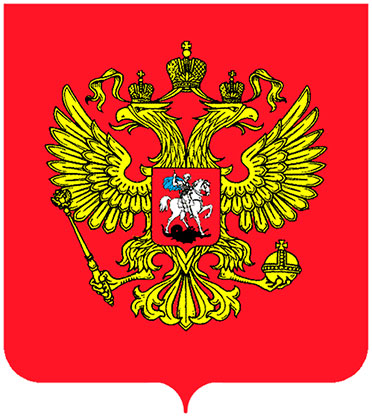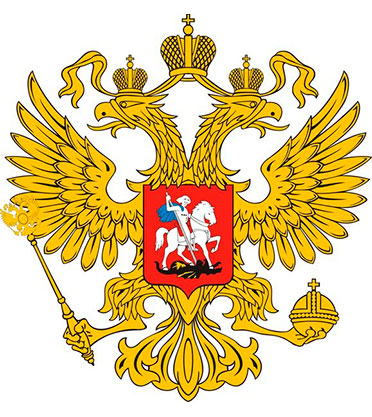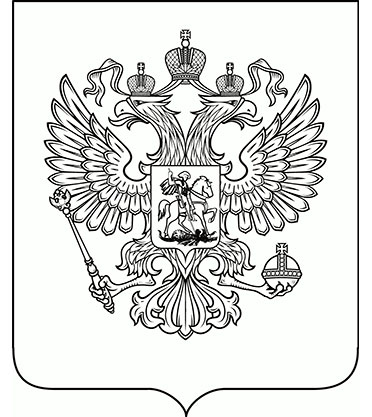


The Coat of Arms of the Russian Federation is a state symbol equal to the Flag of the Russian Federation and the National Anthem of the Russian Federation. The current Coat of Arms of the Russian Federation was modified by President Boris Yeltsin’s Decree as of November 30th, 1993.
The Coat of Arms of the Russian Federation is composed of an image of a two-headed golden eagle on a red French armorial escutcheon. The eagle is crowned with two lesser crowns and one greater crown on top of them joined by a ribbon. The eagle holds scepter and orb in its claws; its breast is decorated with a silver rider on horseback in a blue cloak on a red escutcheon piercing a black serpent writhing on its back with a silver spear. The two-headed eagle as a state symbol can be traced as far back as the rule of Tsar Ivan III, who used it on his royal seal in 1497, though images of two-headed eagles (or other birds) were found in earlier Old Russian art, e.g. on Tver coins.
The current coat of arms is based on the Coat of Arms of the Russian Empire (1882); the new state symbol succeeded the out-of-date Coat of Arms of the Russian Soviet Federative Socialist Republic (after the USSR’s disintegration).